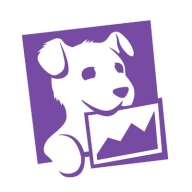

Microsoft System Center and Datadog are competitors in the IT management category. Datadog appears to have the upper hand due to its versatility in handling diverse environments efficiently.
Features: Microsoft System Center provides comprehensive suite management, automation features, and control of third-party hypervisors. It effectively integrates with other Microsoft products and offers valuable operational perspectives and performance monitoring. Datadog is recognized for its ease of use, extensive customization options, and robust integrations with cloud providers. It offers powerful monitoring capabilities, customizable dashboards, and real-time analytics suitable for both developers and non-engineers.
Room for Improvement: Microsoft System Center has challenges with non-Microsoft product integration, a cumbersome installation process, and high computing resource demands. Enhancements in the user interface and reporting flexibility, especially for cloud monitoring, are needed. Datadog users point to a steep learning curve in cost management and feature navigation, as well as needing better documentation, pricing transparency, and advanced alerting and query capabilities.
Ease of Deployment and Customer Service: Microsoft System Center primarily operates on-premises, requiring tight integration with Microsoft solutions, but is known for its complex deployment and limited technical support. Datadog features seamless deployment across cloud environments, benefiting from excellent cloud integration and a user-friendly setup. However, its customer service may lack personalized immediate support, often relying on self-service solutions.
Pricing and ROI: Microsoft System Center has high costs mainly due to licensing fees, which can be mitigated through strategic consultancy and resource planning, resulting in substantial ROI by reducing third-party reliance. Datadog's usage-based pricing offers flexibility but can be costly without careful consumption monitoring. Both products provide significant returns; however, managing costs is crucial to maximizing value.
The documentation is adequate, but team members coming into a project could benefit from more guided, interactive tutorials, ideally leveraging real-world data.
There should be a clearer view of the expenses.
The setup cost for Datadog is more than $100.
Our architecture is written in several languages, and one area where Datadog particularly shines is in providing first-class support for a multitude of programming languages.
The technology itself is generally very useful.


Datadog is a comprehensive cloud monitoring platform designed to track performance, availability, and log aggregation for cloud resources like AWS, ECS, and Kubernetes. It offers robust tools for creating dashboards, observing user behavior, alerting, telemetry, security monitoring, and synthetic testing.
Datadog supports full observability across cloud providers and environments, enabling troubleshooting, error detection, and performance analysis to maintain system reliability. It offers detailed visualization of servers, integrates seamlessly with cloud providers like AWS, and provides powerful out-of-the-box dashboards and log analytics. Despite its strengths, users often note the need for better integration with other solutions and improved application-level insights. Common challenges include a complex pricing model, setup difficulties, and navigation issues. Users frequently mention the need for clearer documentation, faster loading times, enhanced error traceability, and better log management.
What are the key features of Datadog?
What benefits and ROI should users look for in reviews?
Datadog is implemented across different industries, from tech companies monitoring cloud applications to finance sectors ensuring transactional systems' performance. E-commerce platforms use Datadog to track and visualize user behavior and system health, while healthcare organizations utilize it for maintaining secure, compliant environments. Every implementation assists teams in customizing monitoring solutions specific to their industry's requirements.
We monitor all Cloud Monitoring Software reviews to prevent fraudulent reviews and keep review quality high. We do not post reviews by company employees or direct competitors. We validate each review for authenticity via cross-reference with LinkedIn, and personal follow-up with the reviewer when necessary.